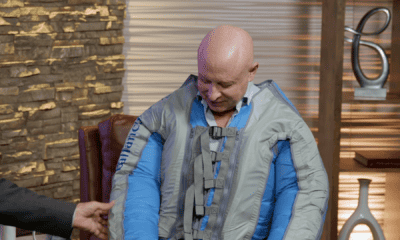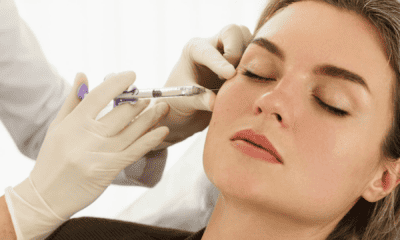Perhaps the most “iconic” sign of aging on the face are the dark circles that form underneath the eyes. Whether physiologically true or not, they are the markers of an aged person, or one who is “tired” and has suffered. Considering how important the face is for human interaction and communication, dark circles have long suggested a “sadness” or “lethargy” – even when none of these negative assumptions are true.
Clearly, the above needs to be managed and corrected if someone still feels vibrant, rested, and young. Plastic surgery offers a variety of tools and procedures to reverse dark circles, but the condition isn’t a singular issue. Board certified plastic surgeons Dr. Stafford Broumand and Dr. Daniel Y. Maman discuss how dark circles form and the handful of varying treatments they utilize to help patients project youth once more.
What Are Dark Circles?
While the condition does seem a singular issue, there are numerous aging situations that can combine to what one would call dark circles. One patient may have a bulge of fat beneath their eyes causing a shadow, while another may be suffering from loose skin and heavy wrinkles. The treatment options for these similar problems can actually be quite different.
“‘Dark circles’ is a catch-all phrase for a very complex problem,” shares Dr. Broumand. “We assess the lower eyelid; is it crow’s feet or wrinkles? Is it bulging fat that casts a shadow? Is it extra skin? We have to assess everything that’s going on with the lower eyelid to give a great outcome to the patient. Whether it’s a non-surgical treatment, like a chemical peel or injectables. Or something surgical, where we remove fat or remove skin.”
The complexity of dark circles requires would-be patients to seek out the right physician to treat them with. While some might claim that a mixed procedure of injectable filler and Botox will cure the issue, that may be woefully ineffective depending on why a patient has dark circles.
“The beauty of being plastic surgeons is when we assess a lower eyelid, we assess it in a way where we’re looking what can be done surgically and what can be done non-surgically, “explains Dr. Maman. “That may include botox, fillers with a future plan for staged or single-stage surgery.”
How Effective are Non-Surgical Treatments, like Fillers?
For many suffering from dark circles, or just slightly dark circles, a non-surgical treatment is the most attractive option. Facial surgery seems scary and downtime-intensive; “hopefully I can just get away with some filler.” Is it possible to correct dark circles with filler alone?
“It’s very rare that I would treat a lower eyelid with just one single treatment, like a filler,” says Maman. “Oftentimes it’ll be Volbella for the medial trough deformity, in conjunction with Botox for the crow’s feet. It’s a complex issue and fillers are a very powerful component of that treatment.”
In the right patient – probably one who is younger and thus has little skin laxity and facial volume loss – dark circles can be addressed with fillers and Botox. As Dr. Maman mentioned, there are a variety of filler options available to surgeons today to be more precise and targeted in rejuvenation. By having dark circles addressed by a surgeon means they’ll have an even finer grasp on a solution via fillers, rather than a non-surgeon practitioner who may attempt a one-size-fills-all solution.
Surgery is Inevitable, but Can Be Pushed Back
At some point, dark circles will require a scalpel. Loose skin may need to be excised and extra fat removed. Patients need not wait and wait until surgery is necessary; a maintenance program with fillers and Botox will not only lessen if not outright solve dark circles for awhile, but will push back the need for surgery further than if they had waited.
“There’s always a point where you have to [pick up the scalpel],” explains Broumand. “We have to have an understanding and a relationship with the patient. Maybe it’s a progression; initially it might just be filler, but as the years go on, we might have to resort to surgery.”


















Facebook
Twitter
Instagram
YouTube
RSS